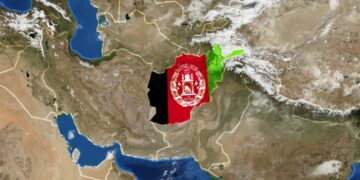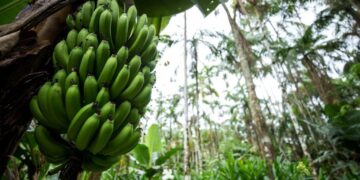Fayehun O. O.;1 Adediran M. B.;2 Oyagbile A. A.;3 & Adegbenle O.4
1Adeyemi Federal University of Education, Ondo State, Nigeria
*Corresponding Author Email: opeyemifayehun@gmail.com …
Highlights
Abstract
This study explored the effects of concept maps on teaching and learning challenging topics in Integrated Science at junior secondary schools in the Odigbo Local Government Area of Ondo State. Data were collected and evaluated through questionnaires and pre/post-test methods designed to gather pertinent information about the study. The data collected were analysed using descriptive statistics, including frequencies, pre/post-tests, and simple percentages. The results indicated that concept maps significantly improved the teaching and learning of difficult topics in Integrated Science. Moreover, the concept map teaching method had a more substantial effect on students’ academic achievement in Integrated Science.
Keywords: Concept mapping, Pedagogical, Constructivism.
1. Introduction
According to Nneji (1999), Okoye (1999), and Umeh (2002), teachers play a pivotal role in effectively implementing any curriculum. Ajaja (2010); Ajaja and Kpangban (2000) assert that students’ acquisition of knowledge depends significantly on the instruction provided by teachers. Consequently, for learning to occur effectively, Integrated Science teachers must be well-prepared with appropriate teaching tactics. Okpala (1991), Okoye (1998), Umeh (2002), Okebukola (2002), and Okechukwu (2003) identify ecology, evolution, and genetics as challenging topics for students. Concept maps, as described by Novak (1990), are diagrams that illustrate the interconnections between ideas, serving as a tool for conveying meaning or providing a structured framework for instruction in specific fields. Okebukola (1998) suggests that these maps can alleviate the difficulties associated with any topic or level within the subject. Given the complexity of genetics in biology, it is crucial to teach and learn this subject systematically. In Nigeria, a majority of senior secondary school students opt for Integrated Science in their senior secondary exams. Despite their enthusiasm for Integrated Science, the consistently poor performance of students is alarming. Between 1991 and 1995, only about 25% of candidates assessed for Integrated Science in the Nigerian senior high school examination achieved passing grades at the credit level (Okebukola, 1998). Researchers, including Alli (1998), have pinpointed various factors contributing to students’ low performance and the inadequate state of Integrated Science education, such as the scarcity of qualified teachers, insufficient practical work, reliance on traditional teaching methods (Olarewaju, 1986), and the inherently conceptual nature of Integrated Science (Schmid and Telaro, 1990; Umeh, 2002).
Furthermore, the blending of theory with practical scientific procedures in instruction, including concept mapping and problem-solving, often confuses students’ theoretical understanding of biological concepts. Integrated Science teachers must consider the unique objectives of each topic and employ corresponding teaching techniques to enable students to develop their justifications and strategies. Concept maps are typically structured hierarchically, placing more complex concepts and materials near the bottom and broader, general content at the top (Martin, 1994; Markham & Mintzes, 1994). Curriculum based on concept mapping offers many advantages over traditional approaches, including improved student performance on academic assessments (Fraser & Edwards, 1985; Akeju et al., 2012). Educators like Mesrabadi et al. (2005) utilise concept maps as a pedagogical tool to enhance students’ deep learning.
1.1 Statement of Research Problem
The primary objectives of teaching are to ensure that the material is easily comprehensible to the students, remains in their memory for a considerable duration, and facilitates connections between the new material and previously learned concepts. An effective method to achieve these goals is through the utilisation of concept maps and digitally assisted concept maps. Şahin (2001) posits that this approach fosters meaningful learning in long-term memory by fostering the development of robust hierarchical structures essential for comprehensive understanding. The creation and use of concept maps offer various advantages. Consequently, the aim of this study is to investigate how concept mapping influences challenging topics in integrated science.
1.2 Objective of Study
The primary aim of this study is to ascertain the impact of concept mapping on the teaching and learning of challenging topics in Integrated Science.
Specifically, the study aims to:
- Identify the challenging teaching topics in the Integrated Science curriculum.
- Investigate the factors that contribute to the difficulty students face with Integrated Science.
- Assess the effect of concept maps on the challenging topics in Integrated Science.
1.3 Research Questions
The study is guided by the following research questions:
- What are the challenging teaching topics in the Integrated Science curriculum?
- What factors contribute to the difficulty students face with Integrated Science?
- What is the impact of concept maps on the challenging topics in Integrated Science?
1.4 Research Hypotheses
H01: There is no significant impact of concept mapping on the teaching and learning of challenging topics in Integrated Science.
1.5 Significance of the Study
The significance of this study is underscored by its contribution to the quest for teaching methodologies that facilitate high-quality education for students, as well as the enhancement of thinking skills through the curricula and teaching strategies employed by educators within the classroom. Given that the linking of concepts forms a foundational learning theory in concept mapping, this research will empower individuals to engage in meta-learning (learning how to learn). Furthermore, this study will prove beneficial to students, Integrated Science teachers, curriculum developers, school administrators, and researchers alike.
2. Research Methodology
2.1 Research Design
The research utilised a descriptive survey design, which is an effective method for gathering information about individuals’ opinions, attitudes, preferences, and experiences through questionnaires.
2.2 Population of the Study
The population for this study consisted of one hundred secondary school students, who were randomly selected from five secondary schools in the Odigbo Local Government Area of Ondo State. The schools selected for this study were:
- Isero Grammar School Oka, Odigbo
- Muslim High School, Odigbo
- Community High School, Odigbo
- Adebayo Comprehensive School, Odigbo
- Blessing Comprehensive High School, Odigbo
2.3 Sample and Sampling Techniques
The selection of schools and respondents (students) was carried out using a random sampling technique. A total of one hundred (100) respondents were chosen from five (5) senior secondary schools in the Odigbo Local Government Area of Ondo State.
2.4 Instrument for Data Collection
Data was collected through a questionnaire designed by the researcher. The questionnaire items were crafted to address the research questions guiding this investigation. It comprised two sections: Section A sought demographic data from the respondents, while Section B contained items designed to elicit responses to the study’s questions. Respondents were asked to indicate their level of agreement on a scale that included strongly agree (SA), agree (A), strongly disagree (SD), and disagree (D).
2.5 Validation of the Instrument
Experts in Integrated Science Education validated the questionnaire. They reviewed the items, made necessary revisions, and their suggestions were incorporated into the final draft of the instrument. Data collection commenced using the final version of the instrument post-validation.
2.6 Method of Data Collection
The selected students were administered the questionnaires to gather information on the challenging topics. Participants were assured of respect for their privacy, and it was guaranteed that their names and information would remain anonymous and confidential in accordance with professional standards. Before distributing the questionnaire, students were briefed on the purpose of the study. After gathering information on the challenging topics, the respondents were divided into two groups: control and experimental. In the control group, a pre-test was conducted for each participant. Subsequently, the conventional pedagogical method of explanation and provision of extensive notes was employed to teach the challenging topics to the students for about a month, followed by a post-test, with the data recorded.
Similarly, in the experimental group, a pre-test was conducted for each participant. This was followed by teaching the students using a specially designed concept map that included the challenging topics for a month, after which a post-test was conducted and data were recorded.
2.7 Method of Data Analysis
The data collected from the study were analysed using frequency counts and straightforward percentages. The analysis of the data was presented in tables and figures.
3. Results
3.1 Demographic Data Presentation
Table 1.1: Gender of the Respondents.
| S/N | Gender | Frequency | Percentage (%) |
| 1 | Male | 49 | 49 % |
| 2 | Female | 51 | 51 % |
| TOTAL | 100 | 100.0% |
Table 1.2: Class of Respondents
| S/N | Class | Frequency | Percentage (%) |
| 1 | JSS1 | 30 | 30% |
| 2 | JSS2 | 36 | 36% |
| 3 | JSS3 | 34 | 34% |
| TOTAL | 100 | 100.0% |
3.2 Result Presentation and Discussion of Findings.
Research Question 1: What are the challenging teaching topics in the Integrated Science curriculum?

Figure 1.1: The difficult topics as opined by the respondents.
The data reveal that 44% of respondents strongly agree that family health is a difficult topic, while 37% agree, 12% strongly disagree, and 7% disagree. Nutrition is considered a difficult topic by 24% of respondents who strongly agree, 27% agree, 30% strongly disagree, and 19% disagree. Disease prevention is viewed as challenging by 30% who strongly agree, 22% agree, 24% strongly disagree, and 24% disagree. The topic of living things is considered difficult by 23% who strongly agree, 36% agree, 24% strongly disagree, and 17% disagree. Non-living things are found difficult by 44% who strongly agree, 28% agree, 13% strongly disagree, and 15% disagree. Work, energy, and power are considered challenging topics by 27% who strongly agree, 45% agree, 18% strongly disagree, and 10% disagree. Types of energy are seen as difficult by 33% who strongly agree, 38% agree, 20% strongly disagree, and 9% disagree. Drug abuse is viewed as a challenging topic by 27% who strongly agree, 37% agree, 14% strongly disagree, and 22% disagree. The concept of matter is considered difficult by 35% who strongly agree, 39% agree, 16% strongly disagree, and 11% disagree. Lastly, Earth in space is seen as a challenging topic by 29% who strongly agree, 39% agree, 12% strongly disagree, and 20% disagree.
The results from Figure 2 clearly indicate that students find several fundamental science topics challenging to comprehend. Consistent with observations by Anyanwu (1991), Umeh (2002), and Makanjuola (2002), among others, certain themes in Integrated Science, such as Genetics, Reflection of Light, Evolution, Work and Power, and Ecology, present specific and difficult challenges for students. These findings align with their observations and further support previous claims by Bahar et al. (1999) and Tekkaya et al. (2001) that biology subjects were also found to be difficult for students to retain. Moreover, the results confirm that physics poses significant challenges, as indicated by Ornek et al. (2008). This is further supported by the WAEC Chief Examiner’s annual reports of 2002, 2004, and 2007, which highlighted that Basic Science candidates exhibit a lack of knowledge in Basic Concepts of Basic Science and show weaknesses in answering questions related to concepts such as Cells and their environment and Genetics.
Table 1.3: Research question 2: What factors contribute to the difficulty students face with Integrated Science?
| S/N | ITEMS | SA% | A% | SD% | D% |
| 1. | Integrated Science curriculum is wide | 48% | 30% | 15% | 7% |
| 2. | Most difficult topics are not well taught by the subject teacher | 26% | 31% | 25% | 18% |
| 3. | Most difficult topics are not taught practically | 21% | 37% | 28% | 14% |
| 4. | Time Allocated to the subject is too small | 28% | 31% | 21% | 20% |
| 5. | Teaching methods used by the teachers make the topics difficult to learn | 35% | 33% | 23% | 9% |
| 6. | Poor study habits among student | 17% | 36% | 27% | 20% |
| 7. | Few number of textbook for teaching and learning | 37% | 27% | 24% | 14% |
| 8. | Most topics are not interesting | 44% | 37% | 7% | 12% |
| 9. | No equipment for practical work | 30% | 48% | 15% | 7% |
| 10. | Most Integrated Science subject teachers do not know much about the practical aspect of topics | 29% | 39% | 20% | 12% |
The findings from Table 1.3 suggest that students exposed to simpler topics perform better in achievement tests than those exposed to topics perceived as difficult. This indicates that students experience difficulties in learning certain concepts in Basic Science, as highlighted by Okafor and Okeke (2006). Abdullahi (1982) and Ajaja (2007) propose that the difficulty students face with some topics might stem from the persistent use of lecture methods rather than the recommended discovery/inquiry approaches, which are centred around student activity. Adeyemi (2008) observed that exposure to practical lessons, alongside high-quality teachers and teaching methods, makes these concepts in Basic Science less challenging for students.
“Why are some science topics difficult to learn? There are several reasons that might answer this question. Numerous factors can influence both perception and meaningful learning. This has led to the identification of the perceived causes behind the difficulties encountered with certain topics.”
Table 1.4: Result presentation on pre-test results
| S/N | Items | Mean | Decision |
| 1 | Family Health | 6.50 | Accepted |
| 2 | Nutrition | 5.35 | Accepted |
| 3 | Disease prevention | 5.65 | Accepted |
| 4 | Living things | 6.60 | Accepted |
| 5 | Non-living things | 6.60 | Accepted |
| 6 | Work, energy and power | 9.90 | Accepted |
| 7 | Types of energy | 10.00 | Accepted |
| 8 | Drug abuse | 9.50 | Accepted |
| 9 | Matter | 7.50 | Accepted |
| 10 | The Earth in space | 9.00 | Accepted |
Table 1.5: Result presentation on post-test results
| S/N | Items | Mean | Decision |
| 1 | Family health | 6.70 | Accepted |
| 2 | Nutrition | 5.35 | Accepted |
| 3 | Disease prevention | 7.10 | Accepted |
| 4 | Living things | 5.00 | Accepted |
| 5 | Non-living things | 6.30 | Accepted |
| 6 | Work, energy and power | 8.00 | Accepted |
| 7 | Types of energy | 7.55 | Accepted |
| 8 | Drug abuse | 9.35 | Accepted |
| 9 | Matter | 9.00 | Energy |
| 10 | The earth in space | 9.00 | Accepted |
5. Discussion of the Results
The experimental group and the control group showed significant differences in their post-test scores following the intervention. The experimental group outperformed the control group in the post-test, aligning with the findings of Sahin (2001). The control group underwent a detailed pedagogical study, while the experimental group engaged in a method known as collaborative concept mapping. The insightful graphical representation provided by the concept map strategy helped to reinforce the students’ memory. Since each concept is linked to others through significant connecting words, students were able to demonstrate a profound understanding of the material. Furthermore, the opportunity for students to create their own concept maps enhanced comprehension levels by offering a clear visual representation of the learned concepts. Working in small groups of four to five, the students participated in discussions that facilitated concept acquisition. The concept map detailed the subject matter comprehensively. This mapping enabled students to relate to the concepts and apply better judgement in testing and classroom scenarios. Compared to traditional pedagogic analysis, students in concept mapping groups were more motivated. Here, the unit content is also divided into simpler components for easier student comprehension. The pedagogical analysis method tends to provide an extensive amount of information, spanning 5 to 6 pages. Conversely, concept mapping condenses this into a single page containing a meaningful map that is easier to understand and interrelate. The concept map strategy can be effectively utilised by teachers, especially when dealing with difficult subjects, to present information in a simpler, more comprehensible diagrammatic form rather than through lengthy and voluminous notes.
6. Conclusion
From the analysis of the results, the research concluded that concept maps significantly impact the teaching and learning of challenging topics in Integrated Science. Furthermore, the concept map teaching method greatly enhances students’ academic achievement in Integrated Science.
7. Recommendations
Based on these findings, the following recommendations were made:
- Science teachers should adopt the Concept Mapping Strategy as a useful tool in teaching secondary students how to create their concept maps, thereby enhancing learning.
- Researchers should conduct concept-mapping studies to determine the effectiveness of the concept-mapping strategy through pre/post-tests.
- Science teachers should receive full support, motivation, and facilitation from the state government, academic planners, and administrators to adopt innovative teaching strategies like the Concept Identifying Mapping Strategy, thereby improving students’ understanding and enhancing academic performance.
- Science teachers should incorporate concept mapping teaching methods in the teaching of science subjects to improve comprehension and identify relationships between concepts and creativity.
- Science teachers should engage in concept mapping to actively involve students in identifying relationships in concepts.
- Class teachers should encourage students to draw a concept map of the topic being taught after teaching.
Conflict of Interest
The research was completed with no conflict of interest.
References
Abdullahi, A. (1982). Age environmental factors in attitude of Nigerian high school students towards science. Benin Journal of Educational Studies, 1(1): 90-94.
Ajaja, O. P. (2007). Teaching method across disciplines. Ibadan: Boman Prints.
Ajaja, O. P. (2010).Processes of science skills acquisition: competencies required of science teachers for imparting them. Journal of Qualitative Education, 6 (4) 1-6.
Ajaja, O.P. and Kpangban, E. (2000). Enriching Biology Teaching in the 21st Century in Nigeria: Implications for the teacher. 41st Conference Proceedings of STA3, 130-140.
Alli, A. (1998). Strategic Issues and Trends in Science Education in Africa, Onitsha, Cape Publishers Int. Ltd.
Bahar M , Johnstone A. H., & Hansell M. H., (1999): Revisiting learning difficulties in biology, Journal of Biological Education, 33:2, 84-86
Fraser K. & Edwards J. (1985), “The effects of training in concept mapping on student achivemant in traditional classroom tests”, Research in Science Education, 29(3): 159-169.
Markham, K. & Mintzes, J. (1994). The concept map as a research and evaluation tool: Further evidence of validity. Journal of Research in Science Teaching, 31(1), 91- 101.
Martin D. (1994), “Concept mapping as an aid to lesson planning: a longitudinal study”, Journal of Elementary Science Education, 6(3): 18-30
Mesrabadi J. & Fathi Azar E. & Ostvar N. (2005), Investigating the Effectiveness of Individual Presentation and Construction and Group Construction of Concept Maps as an Educational Strategy, Quarterly Journal of Educational Innovations, 13(8): 11-23
Nneji, N.G. (1998). Students, Teachers and Examiners Perceptions of Difficult topics in Applied Electricity and Factors responsible for the difficulty levels. Journal of Science Teachers Association of 3igeria, Vol. 33, Nos. 1&2, 56-61.
Novak, J.D. (1990) Concept-Mapping, a useful tool for Science Education Journal of Research in Science Teaching, Vol. 7, No. 10 937-949.
Okafor, E. N. and Okeke, S. O. C. (2006). Concepts mapping as an effective technique for teaching difficult concepts in biology. 47th Annual s Conference Proceedings of STAN, 122-127
Okebukola, P.A.O (1998). Concept Maps as Instructional Tools for promoting meaningful learning in Biology. In Ajewole, et al (Eds.) Instructional Strategies for Teaching and Learning Biology in Secondary Schools”, 11-25.
Okebukola, P.A.O (2002) Beyond the Stereotype to 3ew Trajectories in Science Teaching, Abuja, Trade and Style Publishers.
Okechukwu, R.N. (2003), Isolating Topics of highly perceived difficulty in Senior Secondary School Biology Curriculum. An unpublished Ph.D. Seminar, Delta State University, Abraka.
Okoye, N.S. (1998). Family structure and Achievement in Biology among Secondary School Students in Delta state, Nigeria, Journal of CITADEL, vol. 3, No.6, 98-108.
Okoye, N.S. (1999). Biology laboratory Facilities as tools in the Teaching and learning of Biology in secondary schools, Knowledge Review, vol. 1 No. 2, 60-66.
Okpala, J.O. (1991). Teaching Genetics in Senior Secondary schools approach expected teacher competencies and constraints. Journal of Science Teachers Association of 3igeria, Vol. 2, No. 1, 23-28.
Ornek F., Robinson, W. R. and Haugan, M. P. (2008). What makes physics difficult? Int. J. Environ. Sci. Educ. 3, 30–4.
Şahin, M.B., Ağrılı, H., Koşun, E., & Mengi, H. (2008). Minerals. Ankara: General Directorate of Mineral Research and Exploration Periodicals.
Schmid, R.F. and Telaro, G. (1990). Concept mapping as an instructional strategy for high school Biology. Journal of Educational Research, vol. 54, No. 2 78-85.
Tekkaya C, Özkan Ö, Sungur S (2001). Biology concepts perceived as difficult by Turkish high school students. Hacettepe Univ. J. Educ., 21: 145-150
Umeh, M.O. (2002). Reducing Teachers Instructional Difficulties on some content areas in senior secondary Biology Curriculum for Sustainable development. Proceedings of the 43rd Annual Conference of STA3, 219-223.
About this Article
Cite this Article
APA
Fayehun O. O., Adediran B. M., Oyagile A. A. & Adegbenle O. E. (2024). The Impact of Concept Mapping in the Pedagogy of Difficult Topics in Integrated Science: A Case Study of Odigbo Local Government Area of Ondo State. In Adegbie K. S., Akinsemolu A. A. & Akintewe B. N. (Eds.), Exploring STEM Frontiers: A Festschrift in Honour of Dr. F.O. Balogun. SustainE
Chicago
Fayehun O. O., Adediran B. M., Oyagile A. A. & Adegbenle O. E. 2024. “The Impact of Concept Mapping in the Pedagogy of Difficult Topics in Integrated Science: A Case Study of Odigbo Local Government Area of Ondo State.” In Exploring STEM Frontiers: A Festschrift in Honour of Dr. F.O. Balogun, edited by Adegbie K.S., Akinsemolu A.A., and Akintewe B.N., SustainE.
Received
22 March 2024
Accepted
12 May 2024
Published
26 May 2024
Corresponding Author Email: isabellanyambayo@gmail.com
Disclaimer: The opinions and statements expressed in this article are the authors’ sole responsibility and do not necessarily reflect the viewpoints of their affiliated organizations, the publisher, the hosted journal, the editors, or the reviewers. Furthermore, any product evaluated in this article or claims made by its manufacturer are not guaranteed or endorsed by the publisher.
Distributed under Creative Commons CC-BY 4.0
Share this article
Use the buttons below to share the article on desired platforms.














